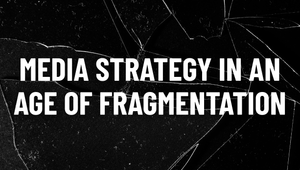
IPA and Tracksuit Data Outlines Transformative Growth Framework for Start-Ups

New industry research from the IPA and Tracksuit, supported by TwentyFirstCenturyBrand and Depop, outlines a transformative growth framework for early-stage businesses. The central thesis is that brand-building, when driven by entertainment and aligned through clarity of purpose, is not a luxury for start-ups, it is a commercial necessity. It will be unveiled by IPA president and BBH London CEO Karen Martin, at a session in the Palais in Cannes on 17 June 2025.
The framework challenges the traditional start-up mindset that prioritises short-term sales over long-term brand value. Drawing on robust data, platform insights, and lived experience, the research identifies three critical pillars for scalable, sustainable growth:
- Early investment in brand is business critical.
- An entertainment-led, multi-channel approach accelerates brand and commercial outcomes.
- Clarity of purpose and alignment are essential for internal and external traction.
1. Early investment in brand drives superior commercial outcomes
The IPA’s analysis of over 2,000 advertising case studies confirms that balancing brand-building with sales activation is the most effective route to profitability. While the “60:40” investment rule is typically applied to mature brands, the latest cut of the data suggests this principle is even more valuable for start-ups.
According to the IPA data, while start and scale ups tend to win on sales driven activity, they find it harder to convert those gains into profit. However, brands in their early stages that generate strong brand effects see 58% higher sales value and 55% more profit than peers who focus solely on activation.
Laurence Green, director of effectiveness, IPA said, “Despite the pressures of rapid growth, brand investment lays the foundation for long-term value creation. The idea that brand should wait until scale is not just outdated; it’s commercially unsound.”
2. Entertainment is a strategic growth lever, not just a creative choice
Findings from Tracksuit, a platform specialising in brand tracking for emerging and scaling companies, both support and build on this finding.
Citing work by Dr Grace Kite, founder and economist, Magic Numbers, they highlight that for new and growing brands, developing a brand ecosystem - where the brand comes to life at every touchpoint – is also essential. According to Dr Kite’s data this creates a synergistic effect, increasing ROI by 35-65% compared to a single-channel campaign. This multi-channel approach also doubles the effect on brand metrics.
Building on this, Tracksuit’s own research shows that when brands adopt an entertainment-led approach, they can outperform expectations. According to their index which was created by surveying 20,000 consumers and analysing millions of social data points, they found that 97% of the top 30 entertaining brands were in growth with over two thirds of them having double-digit revenue growth.
“Through more emotionally-charged marketing, brands are earning attention, building an army of fans willing to share their stories, and making their marketing significantly more effective. When budgets are small, there are two choices: out-think or out-spend. By adopting an entertainment-first brand approach, brands can enhance cultural relevance, emotional connection, and acquisition efficiency - all at relatively low cost,” said Connor Archbold, co-founder, Tracksuit. “Entertainment-led brands such as Duolingo and Liquid Death have demonstrated how powerful a culturally attuned, content-first approach can be for growth-stage businesses.”
3. Clarity of purpose and organisational alignment enable scale
Informed by its work with brands like Depop, TwentyFirstCenturyBrand underscores the importance of embedding clarity of purpose across the organisation from the outset. They have found that this alignment drives consistency, motivates teams and connects brand communications to the company’s long-term vision.
“Brand cannot be treated as a downstream output of marketing, it must be embedded into the business model and decision-making from day one,” said Sara Tate, partner, TwentyFirstCenturyBrand.
Depop’s experience exemplifies this principle in action. “At Depop, the brand was centrally important from the very start” said Peter Semple, Interim CEO, Depop. “It has shaped how we’ve built and evolved the teams, the platform and our community.”
Laurence Green, director of effectiveness, IPA said, “This cross-industry collaboration delivers a clear message to founders, marketers and investors in early-stage ventures: brand is not a ‘nice to have’, it is a proven growth driver; entertaining your audience isn’t superficial, its strategic; and internal clarity around purpose fuels external effectiveness.
“As competition intensifies and customer acquisition becomes more complex, adopting this framework early could be the differentiator between fleeting traction and enduring success.”
The deck is available on the IPA website, following the webinar ‘Born this (brand building) way’.













